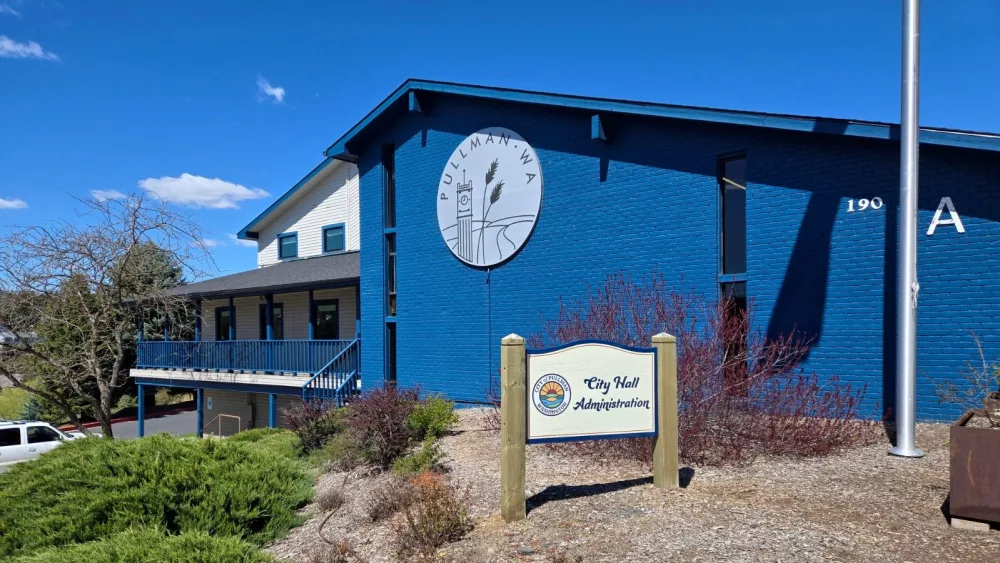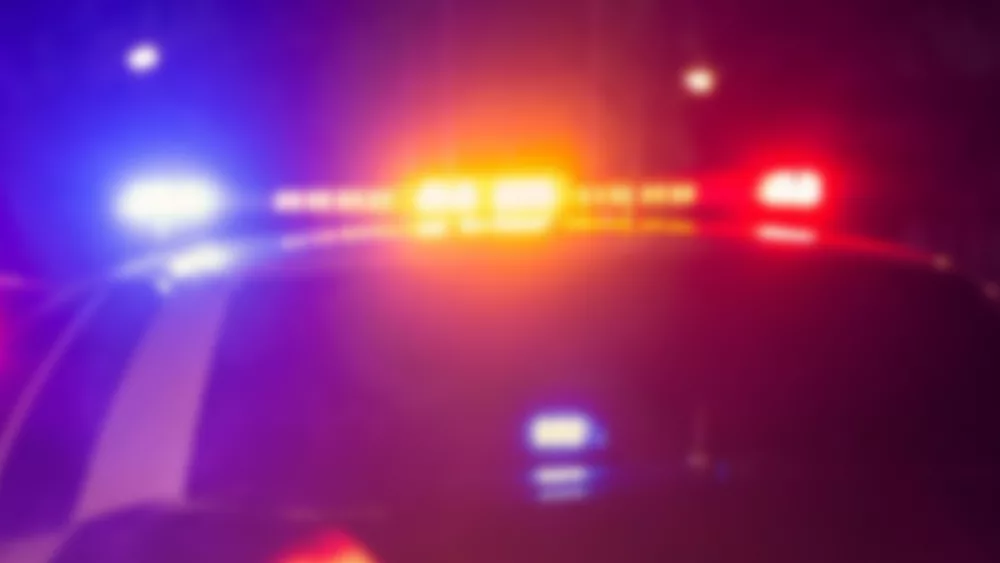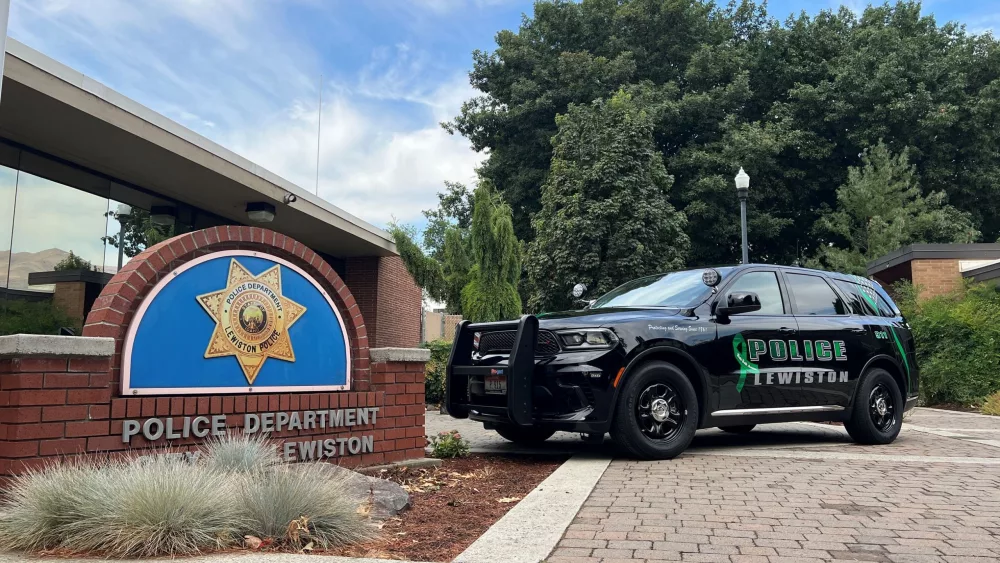Washington, D.C. – On December 6, Vanessa R. Waldref, United States Attorney for the Eastern District of Washington, testified before the United States Senate Committee on Indian Affairs. The title of the hearing was “Fentanyl in Native Communities: Federal Perspectives on Addressing the Growing Crisis.” At the hearing, U.S. Attorney Waldref was joined by Adam Cohen, Deputy Director, White House Office of National Drug Control Policy; Roselyn Tso, Director, Indian Health Service for the U.S. Department of Health and Human Services; and Glen Melville, Bureau Deputy Director, Bureau of Indian Affairs – Office of Justice Services.
U.S. Attorney Waldref gave background on the fentanyl crisis in native communities, and the Department of Justice efforts to respond to it – including prevention and education efforts. One example noted by U.S. Attorney Waldref is the Drug Enforcement Administration’s Operation Engage. In the summer of 2022, Operation Engage worked with the Spokane Tribe of Indians through the Boys and Girls Club in Wellpinit, Washington, to host a day of learning and activities that focused on making healthy choices and increasing drug prevention and awareness.
In addition to prevention and education efforts, U.S. Attorney Waldref highlighted significant prosecutions in the Eastern District of Washington addressing the distribution of fentanyl on Native American reservations. For example, in January, more than 120,000 fentanyl-laced pills and 42 pounds of methamphetamine were sized in a takedown in Yakima County, Washington. In another recent case highlighted in U.S. Attorney Waldref’s testimony, the U.S. Attorney’s Office prosecuted a drug dealer in connection with the overdose death of a young Native American mother, who purchased drugs from the defendant on the Colville Indian Reservation.
“It was an honor to testify before the Senate Committee on Indian Affairs. As I stated in my testimony, the Department of Justice’s commitment to serving Indian country goes beyond prosecution. We are public servants who want to do all we can to make Tribal communities stronger and safer,” stated U.S. Attorney Waldref. “To accomplish that goal, we will continue to work in partnership with Tribal, federal, state, and local partners to effectuate a multi-faceted response to the fentanyl epidemic, who prosecuting those who distribute deadly fentanyl in the Eastern District of Washington.”
When asked during the hearing about examples of success in combating the fentanyl crisis in Native communities by Senator Jon Tester of Montana, U.S. Attorney Waldref further highlighted a case that involved the Bureau of Indian Affairs, the Drug Enforcement Administration, and the U.S. Attorney’s Office in Montana. In that case, more than 100 pounds of illegal drugs, including 161,000 fentanyl-laced pills were seized. A significant portion of the drugs seized were believed to be destined for the Confederated Tribes of the Colville Reservation, as well as for other Native American communities and surrounding areas in Washington and Montana.
A recording of the entire hearing is available here.
U.S. Attorney Waldref’s testimony is below.
Remarks as Prepared for Delivery
Good afternoon, Chairman Schatz, Vice Chairman Murkowski and Members of the Committee. My name is Vanessa Waldref. I am the U.S. Attorney for the Eastern District of Washington. Thank you for the opportunity to discuss the devasting effects that the nationwide fentanyl crisis continues to have in Indian country across the United States and its impact on public safety. The Department of Justice is committed to working in collaboration with Tribal, federal, state, and local partners across Indian country to respond to the fentanyl crisis both through law enforcement action and supportive resources and strategies.
While federal prosecutors have been prosecuting drug trafficking cases for many years, the nature and scope of drug trafficking has changed dramatically with the rise of illicit fentanyl and other synthetic opioids. Unlike heroin or cocaine, which are derived from plants, illicit fentanyl is made in a laboratory. Traffickers who distribute these drugs do not need to worry about growing seasons or droughts impacting the availability of drugs. Rather, they can produce limitless amounts of illicit fentanyl if they have the appropriate chemicals and equipment. Access to the items is often readily available at the click of a button. The resulting explosion in the availability of illicit fentanyl has generated a public health crisis unlike anything this nation has ever seen.
A majority of the drug poisoning (or overdose) deaths in the United States involve illicit fentanyl, which in the Eastern District of Washington is distributed predominantly in the form of fake pharmaceuticals, although fentanyl also is being mixed with other illicit drugs such as cocaine, heroin, and methamphetamine. In fact, in March 2022, the Centers for Disease Control and Prevention (CDC) identified fentanyl poisoning and overdoses as the number one killer of Americans ages 18-45. I have heard heart-wrenching stories from families in my community about the loss of children and loved ones to fentanyl poisoning and witnessed the DEA’s Faces of Fentanyl Wall that commemorates the lives lost to this epidemic. Unfortunately, these devastating stories have become all too common. Each day approximately 275 American lives are lost largely from synthetic opioids such as fentanyl poisoning. In 2021, the CDC reported nearly 107,000 overdose or poisoning deaths — approximately 66% of these were attributable to synthetic opioids such as fentanyl.
Fake pharmaceutical pills often are made to appear legitimate using pill presses and are marketed by drug traffickers to deceive Americans into thinking that they are real, diverted prescription medications. In reality, these fake pills are not made by pharmaceutical companies but by drug trafficking organizations, and they are potentially deadly. Drug traffickers also make fake pills, many of which contain fentanyl, that are brightly colored, or glow in the dark, and are clearly intended to appeal to youth. These pills often are referred to on the streets of our communities as skittles, rainbows, and glow in the dark. DEA lab testing reveals that today seven out of 10 of fentanyl-laced fake prescription pills contain a potentially lethal dose. In some cases, users may think they are purchasing Adderall, oxycodone, Xanax or some other drug that was produced in a factory using quality control standards. Instead, these users are ingesting pills that were made in makeshift labs without any regard for safety. Given that even two milligrams of fentanyl can be deadly, a 30-milligram fake Adderall tablet could easily contain several lethal doses within just one pill. A single fentanyl-laced pill often contains varying levels of fentanyl throughout the whole pill. There have been numerous instances of friends sharing a pill, where one half of the pill has a lethal dose and the other does not, killing one friend and not the other. Federal prosecutors around the country are working closely with our Tribal, federal, state, and local partners to identify and prosecute the drug traffickers who seek to profit from the sale of these deadly substances in our communities. We target the command and control elements of the cartels, the money launderers, and the violent and heartless individuals who choose to sell this poison. Through our law enforcement efforts, we are seeking to hold these criminals responsible for the damage that they have caused to our communities.
Fentanyl overdoses are the leading cause of opioid-related deaths throughout the United States, including Indian country. American Indians, Alaska Natives, and Native Hawaiians are on the front lines of the fentanyl epidemic. The drug-related overdose death rate for Native Americans significantly exceeds the national rate — rising to 56.6 deaths per 100,000 persons in 2021. The CDC has further stated that the overdose death rate for Native Americans is higher than in any other racial or ethnic group. Indian Health Service data similarly shows that Tribal communities are experiencing an increase in overdoses stemming from polysubstance use, many of which arise when a person unintentionally takes drugs mixed or cut with other substances.
In the Eastern District of Washington, we have seen first-hand how fentanyl and other drugs have affected Tribal communities. Families and under-resourced communities have been devastated by this crisis, compounding decades of generational trauma suffered by the Native American communities in our district.
Within our district there are four Tribal Nations that together make up a land mass larger than Connecticut. These proud Tribal Nations include the Confederated Tribes of the Colville Reservation, the Kalispel Tribe, Spokane Tribe, and the Confederated Tribes and Bands Yakama Nation. Of course, the entirety of Eastern Washington is the ancestral home of Salishspeaking people indigenous to this land. For several centuries, the Salish people have cared for this land, which includes their historical hunting grounds throughout our abundant forest, and they have harvested the salmon that once spawned in the mountain streams and rivers that give life to Eastern Washington.
Eastern Washington’s Tribal Nations — which in many cases are hours from the nearest FBI office or federal courthouse — are remote and relatively rural. The rural nature of this land, however, has not spared our Native American communities from the realities of fentanyl. Much like other crises facing Native American populations — such as increased levels of domestic abuse, the climate crisis, violent crime, and the crisis of missing and murdered indigenous people – Native Americans in Eastern Washington are disproportionately impacted by the current crisis involving the prolific distribution and use of fentanyl in Indian country. I would like to walk through some examples from our District:
• Earlier this year, we made one of the largest-ever seizures in our District in a case that involved significant distribution on the Colville Indian Reservation: United States v. Erubey Arciga Medrano. As part of a joint investigation involving Montana and Eastern Washington, the Bureau of Indian Affairs (BIA), Drug Enforcement Administration (DEA), FBI and other federal agencies seized approximately 161,000 fentanyl-laced pills, approximately 80 pounds of methamphetamine, approximately 6 pounds of heroin, and more than 2 pounds of cocaine. This included several thousands of rainbow-colored fentanyl-laced pills that appeared to target youth. The BIA, DEA, FBI and their partners also seized approximately 12 firearms. A significant portion of the drugs, which were seized in rural Oroville, Washington, allegedly were destined for the Colville Reservation, as well as for other Native American communities and surrounding areas in Washington and Montana. Following the seizure in April 2023, we saw a significant reduction in illegal narcotics on the Colville Reservation.
• In January of this year, my office announced a takedown in Yakima County, Washington, involving the seizure of more than approximately 120,000 fentanyl-laced pills and more than 42 pounds of methamphetamine. In United States v. Eliseo Equihua-Zamora, the FBI and its local partners also seized a loaded Beretta pistol and approximately $152,000 in U.S. currency, including approximately $100,000 that was buried outside the residence that was searched. These drugs also were believed to be destined, at least in part, for the Yakama Nation.
• In another case, United States v. Andre Picard, the Defendant, who resided on the Colville Indian Reservation, was prosecuted in connection with the overdose death of a young Native American mother, who purchased drugs from Picard. During the investigation, significant quantities of fentanyl were recovered from Picard, who was distributing fentanyl and other drugs out of his own home. Picard was sentenced to five years in federal prison earlier this summer. Significantly, the quantity of fentanyl and other drugs recovered during the Picard investigation was not particularly large; however, cases like this demonstrate the disparate impact of fentanyl on vulnerable populations. We have seen multiple overdose deaths that have resulted even when just a handful of pills are distributed on Native American reservations in our District.
On Nov. 15, 2021, the President issued Executive Order 14053, Improving Public Safety and Criminal Justice for Native Americans and Addressing the Crisis of Missing or Murdered Indigenous People, outlining the Administration’s commitment to work hand in hand with Tribal Nations and Tribal partners to build safe and healthy Tribal communities and support comprehensive law enforcement, prevention, intervention, and support services.
In fulfilling the directives of the Executive Order, the department recognizes that the widespread availability and abuse of drugs in Indian country, coupled with drug trafficking groups operating in Indian country, contribute to the high rates of crimes on reservations, including violent crime. Therefore, the department has worked to create strategies that address both drug trafficking crimes in Indian country and the violent crimes that are associated with either drug trafficking or substance use disorder.
As part of those efforts, the department throughout 2022 held a series of consultations with Tribal leaders and stakeholders as part of Executive Order 14053. During those consultations, the department heard about the unique challenges that each Tribal community faces in addressing drug trafficking and substance use disorders and how the prevalent substances and available treatment options vary from Tribe to Tribe.
In response to the Tribal consultations, in July 2022, the Deputy Attorney General issued a memorandum requiring each U.S. Attorney to consult with relevant Tribal, federal, state, and local law enforcement agencies in their districts and to develop a strategy to combat drug trafficking. In developing strategies, U.S. Attorneys are to consider targeted prosecutions that have the most significant impact on public safety in individual Tribal communities. Recognizing that enforcement alone cannot solve the substance misuse crisis in Indian country, U.S. Attorneys also were directed to partner with other department components to provide a wide range of resources and conduct outreach.
I, and the 50 other U.S. Attorneys with Indian country responsibilities, followed the Deputy Attorney General’s directive and worked to implement coordinated and collaborative strategies to combat drug trafficking that has caused such catastrophic impact to Tribal communities throughout the United States. As mentioned earlier, our office has prosecuted significant fentanyl cases, targeting activity which has negatively affected the Tribes within our district. Further, our office, along with other U.S. Attorney’s Offices, have coordinated and collaborated with Tribal, federal, state, and local partners to provide education, resources, and outreach.
The U.S. Attorneys’ Offices rely on investigations coordinated by Tribal, federal, state, and local partners. The FBI utilizes Safe Trails Task Forces that conduct many of the drug investigations in Indian country. These task forces include officers from Tribal, federal, state, and local agencies that work in coordination and collaboration within the local communities they serve. Tribal law enforcement task force officers provide invaluable assistance and intelligence related to the drug trafficking in Tribal communities and the identification of suspects. Further, the task force model allows investigations to move beyond an individual Tribal community and target drug traffickers prior to their arrival in Indian country. The DEA provides significant resources to further target cartel operatives and conduct wide-reaching investigations. The DEA and FBI, in partnership with BIA, Tribal, state, and local law enforcement, reach the source of supply, not just the local dealer.
Though criminal prosecutions, like the ones I outlined earlier, are an important tool for addressing the fentanyl crisis in Indian country, we must do more. It cannot be said enough that enforcement operations alone will not stop the flow of fentanyl and other controlled substances to Tribal communities. To combat this crisis and the other crises disproportionately affecting Native American populations, we must embrace a multi-faceted strategy that includes prevention, education, community outreach, and increased resources to combat substance use disorder. Our district is already engaging in proactive measures to implement this type of multi-faceted strategic approach.
Within our district, we have partnered with the DEA’s Operation Engage initiative, a comprehensive community-level approach that bridges public health and public safety to address the drug epidemic by implementing prevention strategies, facilitating conversations, and collaborating with local partners. During the summer 2022, Operation Engage worked with the Spokane Tribe of Indians through the Boys and Girls Club in Wellpinit, Washington, to host a day of learning and activities that focused on making healthy choices, protecting your brain, and increasing drug prevention/awareness, all in the context of a fun environment. Another event is scheduled for early winter 2023.
Operation Engage currently is leading a group of community members who are planning a Youth Cultural Event for this winter. The event will bring Tribal youth together to discuss the dangers of fentanyl and bring education, awareness, and sustainable programs to Tribal communities. The goal is to have youth lead this event, which will include the Kalispel, Spokane, and Colville Tribes.
We also have worked closely with the Spokane Alliance for Fentanyl Education (SAFE) and the Rayce Rudeen Foundation, which consists of a Board of Directors from all facets of our community, including from the Tribes in our district. SAFE has put on numerous community events, including a recent youth summit where high school students from Tribal Nations joined in a unified voice of support and assistance for those facing fentanyl misuse.
SAFE, the Rayce Rudeen Foundation, and Operation Engage have also participated in round table discussions with Tribal leaders about promoting awareness programs within the community and trainings for administering naloxone to overdose victims. Our office is actively engaged in SAFE, and the leader of our Violent Crime and Drug Trafficking Section, along with several stakeholders from the greater Spokane community, serves on SAFE’s Board of Directors, providing essential insight and education to the community on how the fentanyl crisis impacts vulnerable communities and Tribal nations.
The department also is dedicated to improving programs to assist Tribal members that are reentering the community following periods of confinement. For individuals returning from incarceration, successful reentry depends on intergovernmental collaboration that is responsive to both community and returnees’ needs, so that chances for drug use and recidivism are minimized and public health and safety are maximized. This is especially true in Tribal communities, where the complex nature of jurisdiction makes coordination among Tribal, federal, state, and local justice systems particularly challenging. When Tribal members reenter their communities without adequate support, the risk of drug use and violence is greatly increased.
In 2024, the Department’s Bureau of Justice Assistance will be holding in-person, state- based Tribal Intergovernmental Reentry (TIRW) Workshops. These interactive events will provide participants with tools to develop effective reentry plans based on the sharing of operational, organizational, and culture-based concepts and processes that result in the identification of critical services and interventions needed to reduce recidivism, relapse, and victimization. The Eastern District of Washington is committed to working closely with Tribal Nations to engage in these workshops, which will include the U.S. Attorney’s Office, Federal Bureau of Prisons, U.S. Probation, and their Tribal court counterparts.
I am proud of the investigative and prosecution efforts in our district and the other Indian country districts throughout the United States to remove fentanyl from vulnerable populations, such as our Native American communities. At the same time, U.S. Attorneys do not simply prosecute criminals.
Many U.S. Attorneys are active in their Tribal communities and are seeking new and innovative ways to connect with our youth, educate the community about the dangers of fentanyl, and help citizens save lives by administering naloxone to their friends or family who overdose. Our commitment to serving Indian country goes beyond prosecution. We are public servants who want to do all we can to make Tribal communities stronger and safer. To accomplish that goal, we will continue to work in partnership with Tribal, federal, state, and local partners to effectuate a multi-faceted response to the fentanyl epidemic. We appreciate this committee’s focus on this devastating issue and are committed to working with you going forward. Thank you again for the opportunity to participate today.




